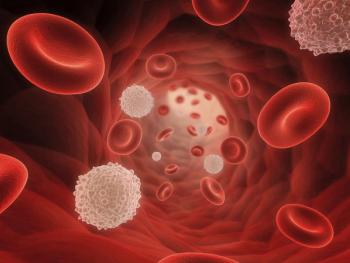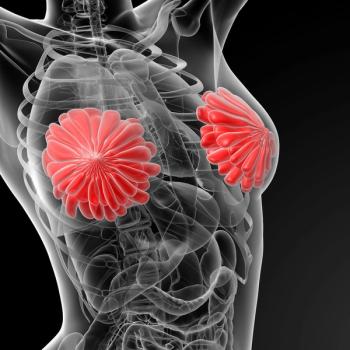
- ONCOLOGY Vol 38, Issue 11
- Volume 38
- Issue 11
General Lifestyle Recommendations for Receiving Talquetamab in Multiple Myeloma
Samatha Shenoy, NP, MSN, highlighted lifestyle recommendations to help patients who are receiving talquetamab treatment for multiple myeloma.
Through years of experience, Samatha Shenoy, NP, MSN, has curated a sheet dedicated to improving the quality of life for patients with multiple myeloma who are receiving talquetamab-tgvs (Talvey). Each section is divided into specifically what the patient may be experiencing and measures on how to overcome it.
These strategies have been tried by patients and recommended by colleagues such as dietitians, dermatologists, and other health care providers. Trying one of these lifestyle recommendations may improve the treatment experience.
Shenoy would like to note that this is not an all-encompassing list and is updated frequently based on feedback from patients and colleagues on what works best.
Taste Adverse Effects
- Management Strategies for Taste Alteration (Dysgeusia, Ageusia, Hypogeusia)
- Practice good oral hygiene such as brushing your teeth 2 times per day with a gentle toothbrush and see your dentist at least 2 times per year.
- Use baking soda and salt rinses before and after eating to clear taste buds.
- Recipe: 1 tsp of baking soda and 1 tsp of kosher salt per quart of water
- Refer to Rebecca Katz’s FASS (fat, acid, salt, sweet) formula to balance flavors (Rebeccakatz.com).
- Eat smaller portions on a small plate; also think about food presentation.
- Food that is presented in a visually pleasing manner can stimulate saliva and appetite.
- If taste alteration is not better despite following these recommendations, and the multiple myeloma is responding to treatment, discuss further with your medical team as they may consider modifying the dose of talquetamab.
AVOID:
- If the mouth, tongue, or throat is sore, avoid adding types of vinegar, citrus, pickled foods, hot spices, alcohol, or tomato-based foods to your diet.
If foods taste metallic or bitter:
Metallic
- Add olive oil, lemon, and maple syrup.
- These can be combined to use as much as needed.
- Tart foods can mask a metallic taste; try adding vinegar, citrus, or pickles to meals.
- If meat tastes metallic, try alternative protein-rich foods such as nuts, nut butter, tuna/egg salad, white flaky fish, protein shakes, yogurt, cottage cheese, beans, or tofu.
- Add olive oil, lemon, and maple syrup.
Bitter
- Add sweet fruits, honey, or syrup to foods and drinks.
- Add fresh or dried herbs (rosemary, thyme, basil, oregano, tarragon, cilantro, mint, and dill), onion, garlic, and spices (cinnamon, cumin, paprika, chili powder, and turmeric).
Either taste
- Eat foods cold or at room temperature.
- Suck on sugar-free lemon drops, mints, or gum.
AVOID:
- Metal utensils and canned foods/drinks.
If foods taste blunted, bland, or like cardboard:
- Add lemon, a pinch of sea salt, and a few drops of maple syrup.
- These can be combined to use as much as needed.
- Add citrus (lemon or lime), vinegar, herbs, spices, or pickled items.
- Marinate foods in wine, Italian dressing, lemon juice, or soy sauce.
- Marinate meats or fish in sweet juices, fruits, wine, acidic dressings, lemon juice, soy sauce, or teriyaki sauce.
- After marinating and cooking, add parsley, olive oil, sea salt, garlic, and lemon.
- Use sea salt instead of iodized salt.
- Blend fruit into shakes, ice cream, or yogurt.
- Try frozen fruits such as whole grapes, mandarin oranges, watermelon, or cantaloupe.
- Add a few drops of honey or maple syrup to sweet foods.
- Add texture by including chopped nuts for crunch, nut butter, or olive oil for a creamier texture.
If foods taste too sweet:
- Season foods with tart flavors such as lemon, citrus, vinegar, and pickled items.
- Add a squeeze of lemon to fruit juice.
- Add plain yogurt or buttermilk to decrease the sweetness or increase the tartness.
- Add coffee or unused finely ground decaffeinated coffee to sweeter oral supplements, such as Boost or Ensure.
- Dilute beverages with either water, ice, milk, or unsweetened plant milk.
- Plant milk will help to add calories.
Management Strategies for Dry Mouth (Xerostomia)
- Stay well hydrated. This loosens thick saliva and keeps the mouth moist. Sip on clear, hydrating beverages throughout the day.
- Sage Toothette Oral Care Mouth Moisturizer is helpful to use at night because you can coat the oral mucosa/tongue/lips.
- Stimulate saliva production by squeezing lemon/lime in water or eating an orange slice before meals. Tart foods/drinks like lemonade or cranberry juice also increase saliva.
- Try mouth lozenges
- XyliMelts: helpful at night, adhere to the gumline and keep the mouth moist
- Biotene
- TheraBreath, or ACT (dry mouth lozenges)
- Saliva substitute sprays (Biotene)
- Biotene toothpaste
- Try mouth lozenges
- Sugarless gum or sugar-free hard candies (citrus-flavored candies work best)
- Soft, bland-tasting foods that are cold or room temperature such as fruits and vegetables that have been blended; well-cooked, tender beef, chicken, or fish; and thin, moist cereals
- Add broth, soup, or gravy sauces to moisten foods.
- Dip or soak food in liquid.
- Suck on frozen fruit pops, ice chips, or sorbets.
- Oral care: Baking soda/saltwater rinses 3 to 5 times per day;
use a soft brush plus toothpaste after each meal. - Swish and spit with club soda or lemon-lime soda to help loosen and remove dry or thick saliva.
- Use a cool-mist humidifier to moisten air, especially at night.
AVOID:
- Caffeinated and alcoholic beverages
- Smoking and chewing tobacco
- Alcohol-based oral rinse
Management Strategies for Difficulty Swallowing due to Dry Mouth (Dysphagia)
- Cut foods into bite-sized pieces.
- Consume small, frequent meals/snacks to get enough calories.
- Eat soft foods or foods that can be cooked until tender.
- Mashed potatoes, squash, ground beef/turkey, soups, smoothies
- Eat soft foods that are rich in protein.
- Cottage cheese, yogurt, milk, cheese, custard, eggs, ground chicken/turkey/beef, tofu, beans/peas/lentils, nuts/nut butter
- Add foods high in calories.
- Drizzle oil into soup, add creamy nut butter to hot cereals/smoothies, add avocados; high-calorie liquids like gravy, milk, or broth instead of water.
- Use a blender or food processor to puree food.
- Add sauce, gravy, or oil to meals to make swallowing easier and add calories.
- Drink liquids through a straw; sit upright while eating, sip liquids with solids.
Nutrition
Management Strategies for Weight Loss
- Consume small, frequent meals/snacks at least every 2 to 3 hours to get enough calories.
- Carry snacks with you at all times.
- Drink liquids after meals to avoid fullness with meals.
- Consume nutritious liquids.
- Smoothies, supplement drinks, milk, or 100% juice
- Limit foods and beverages low in calories.
- Consume protein, plant or animal, with each meal/snack.
- Eat fatty fish (salmon, sardines, black cod) 2 to 3 times a week.
- Choose nutrient-dense food or liquids; calorie-boosting food with each meal.
- Olive oil, avocado, nut butter, or hummus
- Try oral nutrition supplements.
- Kate Farms: Organic Plant-Based Nutrition
- Order through Amazon or Kate Farms website:
https://www.katefarms.com
- Movement and physical activity may help to stimulate appetite.
- Discuss with your medical team whether the degree of weight loss warrants changes in medications affected by weight loss (hypertension, diabetes, thyroid disorder).
- Discuss introducing an appetite stimulant with your medical team.
- Your medical team may consult nutrition experts to help with methods to combat weight loss.
Dermatology
Management Strategies for Skin Toxicities
- Apply heavy moisturizers such as CeraVe, Vanicream, Eucerin, or Cetaphil within minutes of getting out of the shower every day.
- Take lukewarm or cold showers.
- For skin peeling, use AmLactin (ammonium lactate 12%) plus heavy moisturizers and topical steroids 2 times per day.
- Try triamcinolone and then clobetasol if you need a stronger steroid.
- For significant dryness, apply Aquaphor/Vaseline to hands, feet, anywhere needed.
- Wear cotton gloves/socks at least 15 to 30 minutes after applying to maximize absorption (overnight is best).
Management for Rash
- For a rash, topical steroids can be used or you may need oral steroids for more severe rash. Discuss first with your provider.
- For itchy skin, manage with proper moisturization and use heavy moisturizers listed above.
- Topical steroids 2 times per day for itchiness
- Should not be used for face/folds/beyond 3 months without further dermatology evaluation given the risk of striae/atrophy
- Sarna for more diffuse itchiness; keep refrigerated to maximize effect
- Oral antihistamines for itchiness can be found over the counter; discuss with provider.
- Colloidal oatmeal baths for itching/rash/dry skin
- Fissures on hands/feet: super glue to close skin
- For sloughing skin/pain: a small amount of Voltaren gel and Epsom salt baths
- Good hydration with water and noncaffeinated, nonalcoholic beverages
- Your medical team may consult with the dermatology department if concern for infection or if interventions are not helpful.
AVOID:
- Soaps with perfumes/dyes
Management Strategies for Nail Toxicities
- Cuticle oil/vitamin E oil to keep cuticles from drying out. Frequent application of ointments/balms like Vaseline/Aquaphor
- Keep nails short and clean
- File to smooth the edges and corners of the nail plates
- Wear Band-Aids to prevent loose nails from catching
- Wear nail gloves/finger cots
- Sold on Amazon.com
- Consider full hand gloves when washing hair
- Monitor for infection
- Symptoms include pain, swelling, and tenderness around the nail; report to your medical team.
- Topical steroids for peeling around nails
- Biotin may be helpful in strengthening nails.
AVOID:
- Tight shoes; wear soft socks
- Frequent/long durations of water immersion
- Nail hardeners, acrylics, and gels
- Activities that can create or worsen nail damage (that put pressure/force on nails)
The creation of this guide was a collaborative effort. Special thanks to all of Shenoy's dermatology and dietitian colleagues at UCSF for helping to curate this list.
To see Shenoy's full interview regarding talquetamab use in multiple myeloms, visit:
Articles in this issue
about 1 year ago
Precision Medicine in NSCLC The Power of Molecular Testingabout 1 year ago
3 Things You Should Know About Biomarkers in DLBCLabout 1 year ago
Gender Equity in Hematology/Oncology Have We Made Any Progress?about 1 year ago
Assessing NP Roles in Talquetamab Treatment for Multiple MyelomaNewsletter
Stay up to date on recent advances in the multidisciplinary approach to cancer.


















































































